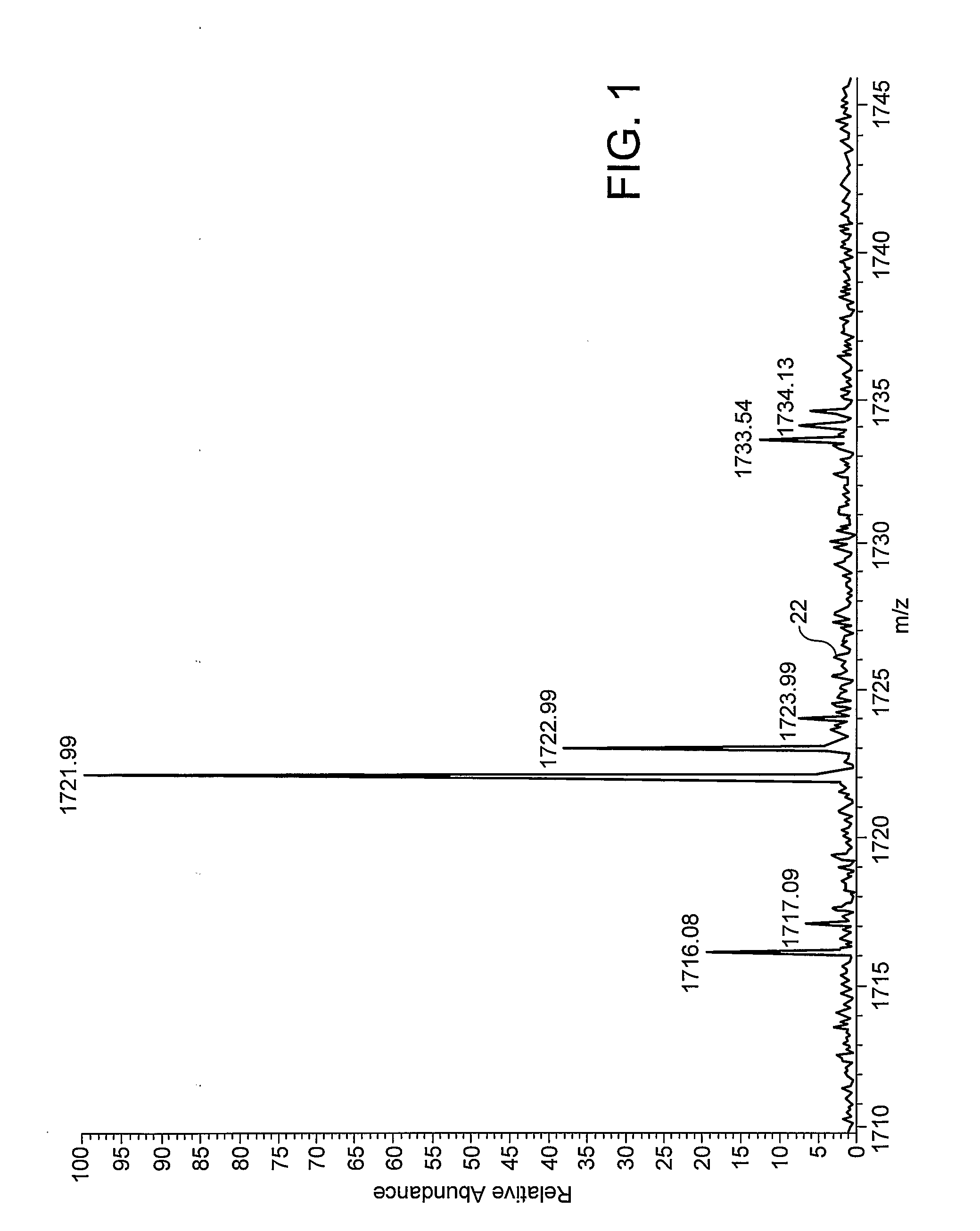Method of Processing Mass Spectrometry Data
a mass spectrometry and data technology, applied in the field of mass spectrometry data processing, can solve the problems of large amount of memory required for storage, affecting the skill of operators, and unable for users or software to re-evaluate data for further characteristics such as peak shape, background, signal-to-noise ratio or other, so as to reduce the amount of noise data
- Summary
- Abstract
- Description
- Claims
- Application Information
AI Technical Summary
Benefits of technology
Problems solved by technology
Method used
Image
Examples
Embodiment Construction
[0037]In Fourier transform ion cyclotron resonance mass spectrometry (FTMS), as is well known, ions are generated at an ion source and are injected into a measurement cell, usually from a storage device such as a linear ion trap. Application of an homogeneous magnetic field and an rf electric (excitation) field to ions held in the cell cause them to orbit at a cyclotron frequency in that cell. The ions are detected by image currents in detection electrodes in the cell.
[0038]The raw data which is obtained by this technique is in the time domain and is known as a transient. Once the transient has been obtained, in a prior art FTMS, a mass spectrum is obtained by the following technique. Firstly, the transient is apodised and zero filled. Next, a Fourier Transform of the data into the frequency domain is carried out. This provides a complex frequency spectrum which consists of pairs of values made up of a real and an imaginary part. After that, a magnitude spectrum is obtained point by...
PUM
 Login to View More
Login to View More Abstract
Description
Claims
Application Information
 Login to View More
Login to View More - R&D
- Intellectual Property
- Life Sciences
- Materials
- Tech Scout
- Unparalleled Data Quality
- Higher Quality Content
- 60% Fewer Hallucinations
Browse by: Latest US Patents, China's latest patents, Technical Efficacy Thesaurus, Application Domain, Technology Topic, Popular Technical Reports.
© 2025 PatSnap. All rights reserved.Legal|Privacy policy|Modern Slavery Act Transparency Statement|Sitemap|About US| Contact US: help@patsnap.com



